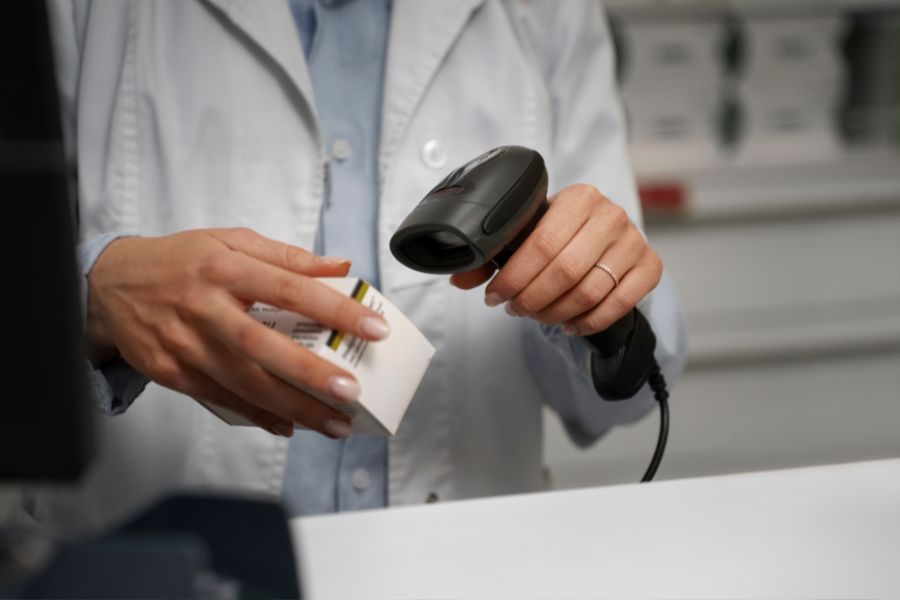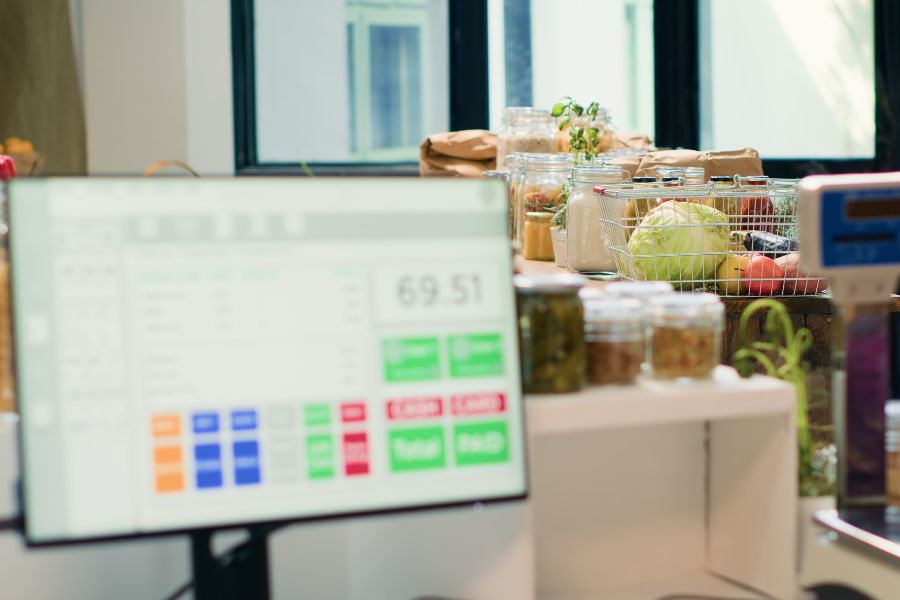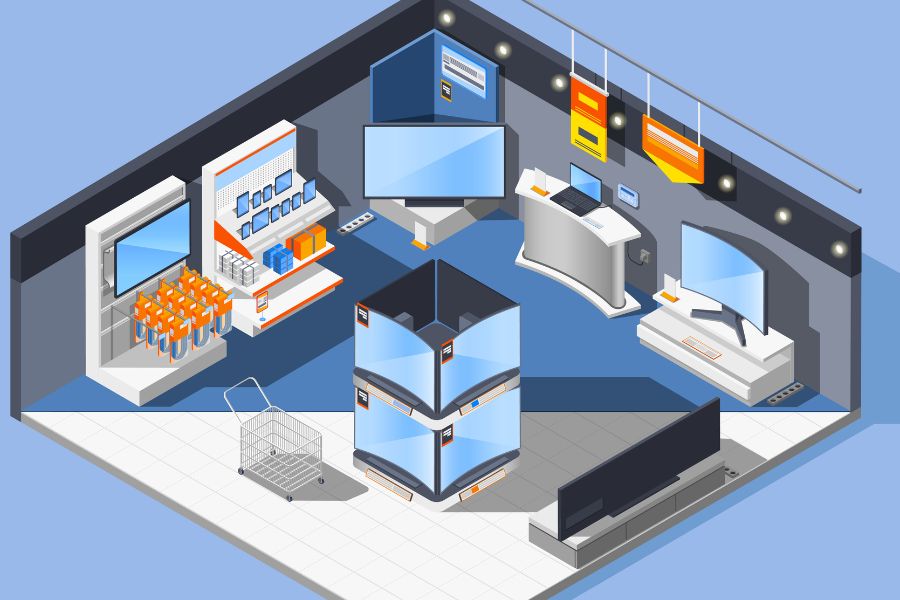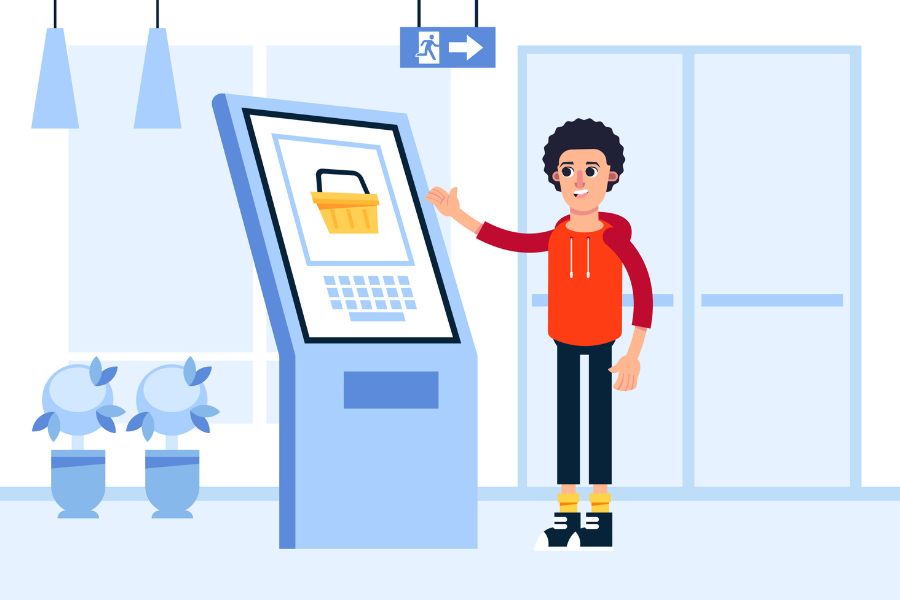Zettle by PayPal is a popular POS choice among small retailers and market vendors. It’s simple to set up and widely used for basic transactions. But as businesses grow, Zettle’s limitations become harder to overlook. If you’re already using Zettle or thinking about it, keep reading. This article outlines the most common Zettle POS issues and suggests practical alternatives suited to evolving retail needs.
Highlights:
- Zettle POS is a mobile-based point-of-sale system by PayPal designed for small retailers, offering basic checkout functions and easy card payment processing.
- The most frustrating Zettle POS issues include unreliable offline access, limited features, high transaction fees, hardware compatibility problems, and delayed payouts.
Overview of Zettle POS
PayPal Zettle (formerly PayPal Here) is a popular mobile point-of-sale app made for small businesses needing a simple payment solution. It lets merchants accept card payments on smartphones or tablets with a small card reader. Zettle connects to PayPal accounts, making online payments and in-store sales easy to track in one place.
The Zettle POS system offers some handy basics: managing products, tracking sales, handling refunds, and simple inventory updates. It’s popular among market vendors, coffee stands, food trucks, and small boutiques that mostly do quick, simple transactions. Merchants like that there’s no monthly fee, just transaction costs each time someone pays.
But businesses quickly notice Zettle’s shortcomings when their needs grow beyond basic checkout. As your shop gets busier, or if you manage multiple locations, the limitations of Zettle become clear, and the Zettle POS issues begin stacking up.
Next, let’s talk about these issues in detail.
Common PayPal Zettle POS Issues Merchants Face
Zettle may work for basic use, but many retailers run into serious limitations as their business scales. We’ve collected the common Zettle POS issues business owners complain about.
1. Restricted Integrations
Zettle connects to some popular apps like QuickBooks and Shopify. But its options are limited. Merchants needing specialized accounting, detailed reporting, or custom inventory apps often hit integration walls. Switching between systems is frustrating and wastes valuable time.
2. Limited Advanced Features
Zettle’s features are fine for simple checkouts. However, once merchants need more, like loyalty programs, detailed inventory tracking, or multi-store management, the app falls short. Growing businesses soon find themselves needing a more capable system.
3. No Offline Functionality
A stable internet connection isn’t always guaranteed, especially for pop-ups, outdoor events, or busy markets. If your Wi-Fi drops, Zettle can’t process sales. This can cost your business both money and customers. Merchants often see this lack of offline mode as one of the biggest Zettle POS issues.
4. High Transaction Fees
Zettle charges notably high transaction fees, which can quickly cut into already slim profit margins, especially for small or seasonal businesses. While the app itself is free, Zettle applies various transaction costs that stack up fast:
- Card-present payments: 2.29% + $0.09 per transaction
- Manual card entry: 3.49% + $0.09 per transaction
- QR code payments: 2.29% + $0.09 per transaction
- PayPal invoice payments: 3.49% + $0.49 per transaction
- Card/alternative invoice payments: 2.99% + $0.49 per transaction
These fees may not seem like much at first glance, but for businesses processing dozens, or even hundreds, of payments daily, the cost becomes significant. Merchants with low-margin products or high-volume turnover feel this the most. Plus, Zettle doesn’t have custom rates based on transaction volume, leaving growing retailers stuck with rigid pricing that’s tough to justify long term.
5. Hardware Compatibility Issues
Many merchants complain about compatibility troubles between Zettle’s software and third-party hardware. You’re often forced to buy Zettle’s own devices, even if your current equipment works perfectly. It’s an extra expense many businesses don’t appreciate.
6. Poor Customer Service
Slow response times, vague answers, and a lack of practical support are common customer service complaints. Merchants report frustration dealing with Zettle’s support, especially when urgent issues like payment holds or hardware breakdowns occur.
7. Frequent Payment Delays
Zettle has a track record of delaying payouts, especially after high-volume sales days. Some business owners report waiting several days, or even weeks, for funds to clear. These delays disrupt cash flow and stall business operations.
8. Unreasonably Low Transaction Limits
Zettle’s transaction limits cause trouble, especially for businesses handling higher-value purchases. Sales may be declined or flagged without warning, preventing merchants from completing legitimate transactions and frustrating high-value customers.
9. Hardware Reliability Issues
Zettle’s card readers and terminals regularly face problems. Battery failures, connectivity troubles, and breakdowns at crucial sales times leave merchants scrambling for backups. Business owners often express frustration with these hardware-related Zettle POS issues.
Now that we’ve covered common frustrations, let’s explore how businesses can effectively tackle these Zettle POS problems.
Effective Solutions to Address Zettle POS Issues
If you’re facing frequent Zettle POS issues, quick fixes won’t help much in the long run. For growing retailers, these quick workarounds waste time and lead to missed sales. If Zettle regularly disrupts your operations, it’s time to identify the root causes and transition to a system that can actually support your business model.
Start by mapping out what’s slowing you down. Are payment delays creating cash flow gaps? Do limited integrations force you to juggle multiple systems? Does the lack of offline access stall transactions during events or in remote areas?
Once you’ve clarified your pain points, it’s easier to select a POS that aligns with your daily operations and growth plans.
Switching to a cloud-based POS that’s purpose-built for retail challenges can eliminate many of Zettle’s weak spots. These platforms handle larger product catalogs, support flexible payment setups, and sync data across online and in-store channels without delay. More importantly, they scale with your business without locking you into restrictive hardware or flat-rate pricing.
ConnectPOS is one example of a system designed with scalability in mind. It supports multi-location operations, real-time inventory control, and customizable workflows, features that Zettle lacks. Rather than adapting your business to fit system limitations, move to a POS that adapts to your workflow and customer experience goals.
Instead of struggling to squeeze your growing business into Zettle’s limited box, pick a POS system built specifically to handle complexity and growth. That’s how you overcome those persistent Zettle POS issues once and for all.
ConnectPOS: A Powerful POS Alternative to Zettle for Growing Retailers
If you’re outgrowing Zettle or need more than basic checkout, ConnectPOS is built to scale. It’s a robust, cloud-based POS system made for serious retail: online, in-store, or both. Zettle works fine for pop-up shops and solo sellers. ConnectPOS, though, is for businesses wanting control, visibility, and growth from day one.
These features show you why ConnectPOS is a smarter alternative to Zettle:
- Omnichannel selling: Handle online orders, in-store sales, and mobile checkouts in one connected system.
- Offline mode: No internet? No problem. Keep selling without disruptions.
- Real-time sync: Inventory, customer data, and orders update across all channels instantly.
- Multi-store management: Run several stores or warehouses from a single dashboard.
- Inventory tools: Track stock levels, create bundles, manage returns, and set low-stock alerts.
- Flexible payments: Accept cards, cash, gift cards, PayPal, split payments, you name it.
- Built-in loyalty: Launch reward programs, issue store credit, and keep customers coming back.
- Advanced reports: Get comprehensive reports & analytics on sales, staff performance, product trends, and customer behavior.
- Customizable layout: Change the POS screen to fit exactly how your team works.
- Broad integrations: Sync smoothly with Shopify, Magento, BigCommerce, Amazon, ERP, or accounting software.
- Device freedom: Use existing hardware or pick from ConnectPOS’s trusted options.
- Transparent pricing: No hidden fees or extra transaction costs, even for multiple stores.
- Built for high-risk and niche markets: Specialized, compliant solutions for firearms, vape, and CBD businesses.
- Modular and composable: Customize your POS to handle unique workflows or specific business needs.
FAQs: Zettle POS Issues
1. What are the most common Zettle POS issues?
Merchants often report high transaction fees, delayed payouts, hardware malfunctions, limited features, and poor customer support. It also lacks offline mode and has restricted integration options.
2. Why do Zettle payments get delayed?
Zettle sometimes holds funds for manual review, especially with high-value transactions. Many users say delays are frequent and poorly communicated.
3. Can Zettle POS handle high-volume businesses?
Not effectively. It’s built for small businesses with simple operations. It lacks multi-store support, advanced inventory tools, and custom workflows needed for larger or scaling businesses.
4. Does Zettle POS support offline transactions?
No. If your internet goes down, Zettle POS can’t process sales, leading to lost revenue and poor customer experience.
5. Can I switch from Zettle to ConnectPOS easily?
Yes. ConnectPOS provides migration support and works with many hardware devices. You won’t need to overhaul your system when you switch.
Final Thoughts
PayPal’s Zettle POS has its place for simple, quick transactions at small-scale events or pop-ups. Yet for merchants who aim for sustainable growth, constant Zettle POS issues create roadblocks that become impossible to ignore. High transaction fees, restrictive integrations, poor hardware reliability, and delayed payments quickly become a costly distraction.
ConnectPOS not only addresses common frustrations with Zettle, but also empowers your retail operation with capabilities that drive real growth. Omnichannel selling, flexible payment options, multi-store management, and reliable offline transactions are just some of the reasons ConnectPOS makes sense for growing retailers. So, if you’re tired of constant troubleshooting and want a POS built to handle tomorrow as well as today, it’s time to make a change.
Ready to experience a POS system that truly supports your growth? Contact us today to learn why ConnectPOS is trusted by retailers worldwide.
ConnectPOS is a all-in-one point of sale solution tailored to meet your eCommerce POS needs, streamline business operations, boost sales, and enhance customer experience in diverse industries. We offer custom POS with features, pricing, and plans to suit your unique business requirements.




